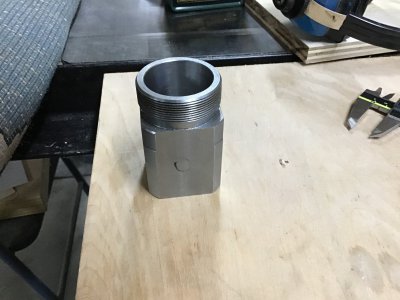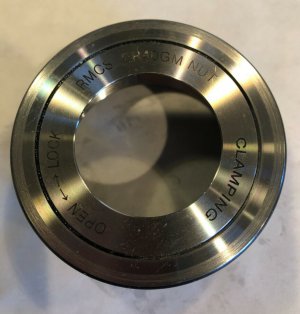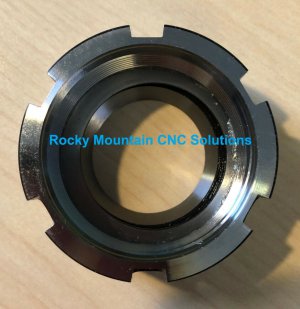Good point. Looks like having both sets is more options if you can fit into your budget. It was always my understanding that the tooling eventually costs more than the machines. As a newbie hobbyist, I am trying to purchase smart. Lots to learn. Thks
Yes, tooling costs add up quick! I like both my ER40 and 5c chucks, and probably use them about the same amount. ER is nice due to the amount the collet can collapse down, so you don’t need as many collets. I mostly use it with inch sized collets with bar stock through the spindle, but I machine mostly in metric, so the closing range of the collets works both for the bar stock and the parts I machined, provided the part is long enough. If the parts are short, the ER collet can’t grip it well, the part needs to be about 2/3 the length of the collet I believe to grip it otherwise the collet closes crooked and the part is not held sufficiently. That is where 5c is needed, the part can be really short and it will still grip because it only grips at the front of the collet. But, 5c only has a really small clamping range, so you need a collet for every size you will be machining.
As mentioned above, I would go with a 5c set up for this job so that you have a depth stop for doing both sizes to the proper length, but if you don’t foresee needing a depth stop for this project or anything planned in the future, an ER chuck would work too. Another option, you could make an ER chuck that is held in a four jaw chuck. I did that before buying my chucks, and it worked ok. It wasn’t great, but for the cost of a nut and a short piece of material, it got me going. You can use Joe Pie’s method for setting the angle of your compound, and then verifying it on a collet. The picture below is what I made, it is square because once I got my ER chuck, I took the round chuck I originally made and put flats on it to use in my mill vise. I had trouble getting the flats square to the collet taper and gave up and bought 5c collet blocks for the mill instead, but it was a good learning experience.

On last thing, if you haven’t seen it already, This Old Tony has a video on YouTube where he makes a backing plate for his lathe with the same type of spindle as yours if you want to make one in the future.




